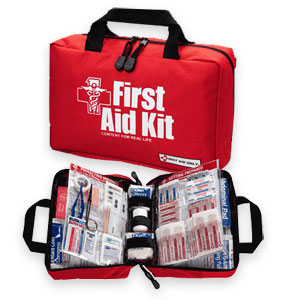
Aside from some common medicines and those meds that are specifically prescribed to a family member, there are other things you must have. Here’s a list of some must-have items for your first aid kit.
- Adhesive Bandages
Bandages come in different shapes and sizes and you should have these in your first aid kit. Most cuts don’t need to be bandaged or covered up. However, cuts or wounds in places that are in danger of getting dirty (like the hands) or where they might rub against something should be covered up to prevent an infection from happening. But for deep cuts or wounds that won’t stop bleeding, a doctor has to be consulted already.
- Antiseptic
Most small cuts or wounds can be cleaned with just simple soap and water, but an antiseptic does a better job of cleaning wounds and reducing the risk of infection. There are several different kinds of antiseptic on the market, but two of the most common are hydrogen peroxide and isopropyl alcohol. Of the two, isopropyl alcohol, which is also known as rubbing alcohol, is more popular and is very handy too as it can be used for various purposes like cleaning thermometers, tweezers, cleaning the bathroom and even the more mundane things like preventing a ring from developing around the collar.
- Sterile gauze
Anyone who has undergone first aid training knows how crucial a sterile gauze and medical tape are for taking care of wounds that need something bigger than a band-aid. Sterile gauzes come in different shapes but it’s a good idea to have gauzes in roll or pad forms. Dressing a wound would require that the gauze be placed on the wound or wrapped around it. It’s then secured in place with the medical tape.
- Thermometer
Every home should have several thermometers, and one should be kept in the first aid kit. However, not just any kind of thermometer would do. These days, most medical personnel are opting for digital, ear canal, flexible forehead or glass alcohol thermometers. Not only are these new thermometers very accurate, it’s also safer than the old mercury thermometers. Mercury is a neurotoxin that can easily poison the nervous system so it’s best to steer clear of this type of thermometer.
Every family should be prepared for any medical emergencies. Aside from having their own customized first aid kits, getting some training for emergencies is also a good idea. There are numerous St Mark James programs that offer different first aid classes. Why not check it and look for one that your family can go to.
